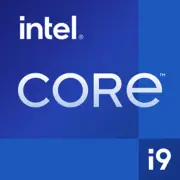Intel Core i9-7980XE Extreme Edition

Intel Core i9-7980XE Extreme Edition: A Guide to the Legendary 18-Core Monster (2025)
Last Updated: April 2025
Key Specs: Architecture, Process Technology, and Unique Features
The Intel Core i9-7980XE, released in 2017, remains a cult favorite for enthusiasts. Despite its age, its 18 cores and 36 threads are still relevant for specific tasks.
Architecture and Process Technology
- Codename: Skylake-X.
- Process Technology: 14 nm (optimized version of Intel 14nm++).
- Base Clock: 2.6 GHz, with Turbo Boost up to 4.4 GHz (Turbo Boost Max 3.0).
- Cache: 24.75 MB L3, 1 MB L2 per core.
Key Features
- Unlocked Multiplier for manual overclocking.
- Support for Intel Optane Memory and AVX-512 for workloads.
- 44 PCIe 3.0 lanes — capability to connect multiple GPUs and NVMe drives.
Performance
In Cinebench R23 tests, the 7980XE demonstrates around 3400 points in single-threaded mode and up to 32000 in multi-threaded. In comparison, the modern Core i9-14900K (24 cores) scores approximately 28000 in multi-threading but excels in single-threaded tasks due to frequencies up to 6 GHz.
Compatible Motherboards: Socket, Chipsets, and Selection Nuances
Socket: LGA 2066 — a specialized platform for HEDT (High-End Desktop).
Chipsets
- Intel X299: The only option. Supports overclocking, multi-GPU configurations (NVLink/SLI), and up to 128 GB DDR4.
Recommended Models
- ASUS ROG Rampage VI Extreme — a choice of overclockers (price in 2025: ~$450 for new, if you can find one).
- MSI X299 Gaming Pro Carbon AC — a balance of price and features (~$300).
Selection Features
- VRM Module: At least an 8-phase for stable overclocking.
- VRM Cooling: Heatsinks with heat pipes are essential — the chipset heats up under load.
- Ports: Look for motherboards with USB 3.2 Gen2, Thunderbolt 3 (via additional controller), and 2-3 M.2 slots.
Supported Memory: DDR4 and Limitations
- Type: Only DDR4 (DDR5 is not supported).
- Frequencies: Officially up to 2666 MHz, but with overclocking — up to 3600 MHz (depends on the motherboard and memory chips).
- Configurations: 4- or 8-channel mode (most X299 boards — 4-channel).
Practical Example
A build based on G.Skill Trident Z RGB (4x16 GB, 3200 MHz) shows a rendering performance increase of up to 12% compared to 2666 MHz.
Power Supply Units: Power Calculation and Recommendations
CPU TDP: 165 W, but during overclocking (up to 4.6 GHz on all cores), consumption can reach 300 W.
Recommendations
- Minimum: 850 W (for a PC with a single GPU such as the RTX 4080).
- Optimal: 1000–1200 W (for 2x GPUs, RAID arrays, and peripherals).
- Certifications: 80+ Gold or Platinum (Corsair HX1200, Seasonic PRIME TX-1000).
Important! Cheap PSUs with high ripple can cause instability under multi-threaded loads.
Pros and Cons of i9-7980XE
Pros
1. Multi-Threaded Power: 36 threads are relevant for rendering, code compilation, and virtualization.
2. Scalability: Support for 4-channel memory and 44 PCIe 3.0 lanes.
3. Overclocking Potential: Enthusiasts have been able to push it to 4.8 GHz using liquid nitrogen.
Cons
1. Power Consumption: Under overclocking, the system can draw up to 500 W.
2. Outdated Platform: No PCIe 4.0/5.0, DDR5, or USB4 support.
3. Price: New units in 2025 cost between $1500 and $2000 (if available).
Usage Scenarios: Where the i9-7980XE Still Shines
1. Workstations
- 3D Rendering (Blender, V-Ray): 18 cores reduce rendering time for complex scenes.
- 8K Video Editing: In Premiere Pro and DaVinci Resolve, the CPU handles proxy encoding in the background.
2. Virtualization
Running 5–7 virtual machines simultaneously without lag (for example, software development in isolated environments).
3. Gaming
- Streaming: CPU encoding in OBS has little impact on FPS.
- Games leaning on multi-threading (Civilization VI, Microsoft Flight Simulator 2024) maintain stable 60+ FPS in 4K.
However! In CS2 or Cyberpunk 2077 with an RTX 4090, it falls short compared to modern Core i9-14900K by 15–20% due to lower IPC (instructions per clock).
Competitors: Who to Compare in 2025?
1. AMD Ryzen Threadripper 1950X (2017): 16 cores, ~$1000. Falls behind in multi-threading (~25000 in Cinebench R23), but is cheaper.
2. AMD Threadripper 3970X (2019): 32 cores, starting at $2000. For those needing maximum performance.
3. Intel Core i9-13900KS (2023): 24 cores (8P+16E), higher IPC, but limited to the LGA 1700 socket.
Conclusion: The 7980XE is a choice for those who already have an X299 board and want an upgrade without changing the platform.
Build Recommendations
1. Cooling
- Liquid Cooling: Arctic Liquid Freezer II 420 (420mm radiator).
- Air Cooling: Noctua NH-D15 (with mounting bracket replacement for LGA 2066).
2. Case
- Minimum: Lian Li PC-O11 Dynamic (good ventilation).
- Ideal: Thermaltake Core WP100 (supports E-ATX and liquid cooling).
3. Add-Ons
- Thermal paste Thermal Grizzly Kryonaut.
- Additional fans for VRM cooling.
Final Conclusion: Who is the i9-7980XE Suitable for in 2025?
This processor should be considered if:
- You already have an X299 board and need an upgrade without changing motherboards.
- You work with multi-threaded applications and are not ready to switch to DDR5/PCIe 5.0.
- You want a rare “old-school” HEDT PC for experimentation.
For gamers and casual users, the choice is not optimal: modern Core i7/i9 13th-14th generation and Ryzen 7000/8000 offer better energy efficiency and single-threaded speed.
If you find a new i9-7980XE in 2025 — it's a rarity. However, for niche tasks, it can still surprise with its power, recalling an era when Intel dominated the HEDT segment.
Basic
CPU Specifications
Memory Specifications
Miscellaneous
Share in social media
Or Link To Us
<a href="https://cputronic.com/en/cpu/intel-core-i9-7980xe-extreme-edition" target="_blank">Intel Core i9-7980XE Extreme Edition</a>